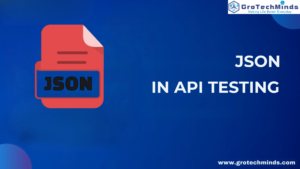

interview questions on manual testing for freshers
This post contains numerous important manual testing interview questions and software testing interview questions to boost your confidence before an important interview. Get useful ideas and tips for improving your skills and making a successful career in manual testing.
Testing the functionality or features of software applications according to customer requirements through human efforts is called Manual Testing.
Testing the functionality or features of software applications according to customer requirements through human efforts as well as by writing Automation scripts on some Automation tools like Selenium and QTP is called Software Testing.
Testing the components of a Software application thoroughly and rigorously is called Component testing.
Testing the data flow between 2 to 3 modules of a Software Application is called Integration testing.
System testing is an end to end testing where the testing server is similar to a production server.
Testing the end to end scenario based on the customer real time business workflow is called Acceptance Testing. In acceptance testing, the customer will check whatever requirements he wants are present in the software application or not. The other name of this testing is also called user acceptance testing.
Beta testing is one type of acceptance testing where we test an application in the beta environment before the release is made. Beta testing is just like a production environment without real traffic.
Beta release of software applications is done by companies before final release into the market where the customers will get a glimpse of the software application and give the feedback about the functionality of application and based on that feedback the software companies make changes in the software application before releasing finally into the market. It is also one type of acceptance testing.
Release notes are documents that are given to the customer along with software applications at the end of the sprint or project. Release notes are prepared by product managers, developers and testers.
Release notes consists of
- Overview of the software application.
- procedure for how to install the software.
- procedure for how to uninstall the software.
- What are the bug fixes done
- What are the bugs we are releasing with software
- What are the features we are giving
- what are the features deleted.
- Software version id.
- Release Date of software application.
Retesting is done by the tester to check if the bug which was raised by him and assigned to the developer is fixed by the developer or not.
| Test Scenarios | Test Cases |
| Derived from Requirements | Derived from Test Scenarios |
| High Level Document | Low Level Document |
| Test Scenarios tell what to test | Test Cases tell how to test |
| By looking into test scenarios it will be difficult to test the application | By looking into test cases it will be easy to test the application. |
The people involved in the test case review process can be Senior Tester, Lead Tester, Junior Tester and QA Manager.
- Testers write test scenarios and test cases and send to reviewer
- Reviewer after finding the mistakes comment on the mistakes and send back the test scenarios and test cases to tester
- Testers then correct the mistakes based on comments received from reviewer and send the test document again to reviewer
- Reviewers on finding the necessary corrections made by the tester send the document to the approver.
- The approver after receiving the document from the reviewer approves the document and sends it to the tester.
- The tester finally starts the test cases execution after getting approved by the approver and the approver is a QA Manager.
| Positive testing | Negative Testing | |
| Definition | Positive testing, also referred to as happy path testing, verifies that a system or application responds as expected when given proper and expected inputs. | Negative testing involves making sure a system or application can accept faulty or unexpected inputs and conditions gracefully. |
| Key Characteristics | Inputs that are within the expected and specified range are used for testing. | Test with inputs that are outside of the expected or valid range. |
| Examples | Submitting a login form with correct credentials. | Entering an incorrect username or password during login. |
| Objective | Find out that the system runs smoothly under normal, expected conditions. | Identify and correct risks and flaws in error handling. |
Test Case Template is a document which contains all the details involved in testing each and every functionalities of software application.
- Test Case ID- It is a number assigned to each functionality of the application which will undergo testing.
- Test Scenario-Refers to the names of the functionalities of the application which is to be tested.
- Pre-Condition- Refers to the condition which is necessary for successful testing of functionality of software application.
- Steps to Reproduce- Refers to the step by step procedure involved in testing each functionality of a software application.
- Expected Behaviour- Refers to how the software application should behave.
- Actual Behaviour- Refers to how a software application is actually behaving.
- Result – Refers to the combined outcome of expected behaviour and actual behaviour. Result is called Passed if expected behaviour and actual behaviour are same and Result is called failed if expected behaviour and actual behaviour are different.
- Bug ID- Number assigned to a bug is Bug ID. Bug is raised by the tester when the tester finds a difference between expected and actual behaviour.
- Comments- Refer to any statement.
- Automated- Refers to whether the functionality is ready for automation testing.

Testing functionality or behaviour of software applications without looking at code is black box testing. It is done by testers.
Any Bug that gets leaked into the production from the testing environment unintentionally is called bug leakage. The Bugs that get leaked into production are of high priority as well as low priority. Low priority bugs can be fixed in the upcoming sprint but high priority bugs have to be fixed in the current sprint using HotFix.
Any Bug that gets intentionally released into the production is called Bug Release. The Bugs which get released into the production are always of lowest priority since fixing every bug within the sprint is not possible.
Any Bug that gets leaked into the production and in case it is of high priority and high Severity, then the company will have to immediately fix it . This quick fixing of bugs is called HotFix. HotFix is done in about 1 or 2 hours or maximum one day. The reason it is done is so that the customer does not move over to the competitor companies. The whole process is called HotFix.
The main aim of testers7 is to check whether the software application is working as per customer requirement by testing every functionality of the application and checking of the bugs present in it so that a very good quality of software application can be handed over to the customer.
Test execution means finding out the actual behaviour of a software application by practically executing steps to reproduce or steps to run the software application .
The purpose of doing testing is to check whether the software application is working as per customer requirement by testing every functionality of the application and checking of the bugs present in it so that a very good quality of software application can be handed over to the customer.
Meaning of Defect – Difference between expected and actual behaviour of software application is called defect which is found by developer in development environment.
Meaning of Bugs – Difference between expected and actual behaviour of software application is called bugs which are found by testers in the testing environment.
Meaning of Error – Error is the coding mistake done by a developer while doing white box testing.
Meaning of Failure – Failure happens in the production environment when the actual behaviour is not the same as expected behaviour. Failure also means bug leakage.
No , because there is also a high possibility that the minor defect can also affect the customer’s real time business workflow. Since it is not possible to give a 100 percent defect free software to the customer, software which customer gets has some minor defects along with it and this coming up of minor defects along with software at time of release is called bug release. So the company after knowing about those defects from customers will try to fix the defects so that in the next version or release of the application it will not be present.
Formal testing refers to the kind of testing where we document everything like test scenarios,test cases, test plan,traceability matrix etc.
Build refers to the compressed and compiled form of software code.
Patch is a piece of new code which will replace the existing code with the new correct code.
Data which is required to test the functionality of software applications is test data.
Release refers to the last phase of the software development lifecycle where the software application is being given to the customer.
- We should test the software application at an early stage.
- We should not do exhaustive testing.
- We should always do context based testing.
- We should avoid the Pesticide Paradox.
- We should ensure defect clustering does not take place.
- It is not possible to give 100 percent error free software to customers.
- Absence of error fallacy.
This post contains numerous important manual testing interview questions and software testing interview questions to boost your confidence before an important interview. Get useful ideas and tips for improving your skills and making a successful career in manual testing.
Testing the software application randomly without looking into the requirements is called Adhoc testing.
In the context of software development and testing, verification and validation are two separate methods:
| Verification | validation | |
| Focus | The process of checking work products throughout the development process to ensure that they meet stated standards and requirements is known as verification. | Validation is concerned with making sure the finished result (the completely created software) fulfils the customer’s requirements and expectations. |
| Goal | The primary purpose of verification is to make sure that the product has been built correctly in accordance with the design specifications. | The primary purpose of validation is to make sure that the software product meets the defined business needs and functions properly in its intended environment. |
| Activities | Reviews, inspections, and inspections are examples of verification activities. It entails reviewing documentation, design requirements, code, and other objects to ensure consistency, completeness, and accuracy. | Testing the actual software product is one of the validation activities. This can include functional testing, system testing, and user acceptability testing to ensure that the programme behaves correctly and fulfils user expectations. |
| Example | Verification activities in software development may include ensuring that the code follows coding standards, examining design papers to ensure they fit with requirements, and confirming that testing procedures are in place. | Validation can be seen by running a collection of test cases to guarantee that a banking software programme correctly processes transactions, generates accurate statements, and conforms with security and regulatory standards. |
A test case is an exact collection of conditions or variables that a tester will use to determine whether or not a software programme or system is performing properly. It is a document that describes the processes to be done, the data to be entered, and the expected outcomes during the testing process.
Test cases are essential parts of the software testing life cycle, assisting in the validation, verification, and assurance of the quality of software products before they are delivered to customers. They are an essential component of the overall quality assurance and development processes, helping to create robust and dependable software systems.
The key difference between black-box and white-box testing is the tester's understanding of the software's internal workings. Black-box testing considers the system to be a "black box" with unknown internal details, focused on inputs and outputs.
White-box testing requires an in-depth understanding of the internal code and structure, allowing testers to create test cases based on the system's internal logic and algorithms. Both testing methodologies are valuable and are frequently used in concert to guarantee complete test coverage in software development.
Boundary testing is a software testing technique that focuses on analysing a system's behaviour at its limits or borders. The purpose of boundary testing is to guarantee that the programme successfully handles input data at the limits of allowable ranges and situations. This includes testing values at the lower, upper, and just beyond those boundaries.
Boundary testing is an important testing approach that assures software’s robustness and dependability by thoroughly assessing its behaviour at the limits of input ranges and situations. It is an essential component of the testing process for improving the quality of software products.
The method of organising and sorting test cases based on their importance, impact, and urgency is known as test case prioritisation. It aids in testing effort optimization by focusing on essential scenarios and ensuring that high-priority test cases are completed first. Prioritising test cases is critical for effective and efficient testing.
Key Factors for Test Case Prioritization
- Business Impact
- Critical Functionality
- Risk Assessment
- Dependency on Other Test Cases
- Regression Impact
- Exploratory Testing Findings
Equivalence partitioning is a software testing approach that divides a software application's input data into groups or partitions of equivalent data.
The goal is to treat each partition as a representative or “equivalent” set of input values, with the assumption that the software should behave consistently inside each partition. This technique is especially beneficial for quickly designing test cases while still giving enough coverage.
The defect life cycle, also known as the bug life cycle or problem life cycle, is a set of stages that a defect goes through from the moment it is discovered until the time it is resolved and verified. This life cycle helps in the management and tracking of defect resolution progress during the software development or testing process.
Reporting a defect effectively is crucial for the development and testing team to understand, reproduce, and ultimately fix the issue. A well-documented defect report provides clear information about the problem, making it easier for developers to identify and address the issue.
key steps and information to include in a defect report:
- Defect Identifier
- Summary
- Description
- Steps to Reproduce
- Expected Behaviour
- Actual Behaviour
Regression testing is a software testing technique that entails re-running a group of test cases to check that new code changes or alterations to an application do not have an adverse effect on current functionalities. The fundamental purpose of regression testing is to find and uncover any unexpected side effects or regressions caused by recent software changes.
Regression testing is an essential part of software development and maintenance. It is critical in ensuring the stability and reliability of software programmes, allowing teams to make changes and improvements with confidence without jeopardising existing functionality.
Choosing which test cases to include in regression testing requires a systematic approach to ensure that the most critical and impactful scenarios are efficiently covered.
The following are the major processes and factors to consider when determining which test cases to include in regression testing:
- Identify Core Functionalities
- Prioritise High-Impact Areas
- Focus on Critical and Frequently Modified Code
- Consider Areas Prone to Defects
- Include End-to-End Scenarios
Exploratory testing is a dynamic and unscripted approach to software testing in which testers actively explore the application, build test cases on the fly, and execute tests based on domain knowledge, intuition, and experience. Exploratory testing's purpose is to find problems, analyse system behaviour, and get a deeper understanding of the application's operation in an interactive and adaptive manner.
Consider the following scenario: a software development team is working on an e-commerce platform, and a new checkout feature has been developed. This feature's formal test cases cover the intended user flows and frequent scenarios, but the team recognises the need for a more dynamic and hands-on approach to find any flaws. Exploratory testing is especially effective in this situation.
Yes, there is Several testing tools, each fulfilling a different role, are widely used in the software development and testing business. Here are a few examples:
Purpose: Primarily used for automating web applications for testing purposes.
Experience: Selenium is highly popular for its flexibility and ability to work with multiple programming languages. It's extensively used for functional and regression testing of web applications.
Purpose: Java-based testing frameworks for writing and running test cases.
Experience: JUnit and TestNG are widely used for unit testing in Java applications. They provide annotations to define test methods and offer features for parameterized testing and test suite configuration.
Version control, also known as source code management (SCM) or revision control, is essential in the creation and testing of software. Its utility extends beyond only managing the application's source code; it is also useful for organising test assets and allowing cooperation within a testing team.
Version control is essential in testing to ensure the consistency, integrity, and collaboration of testing objects. It supports efficient testing processes, increases team member collaboration, and improves the overall quality and dependability of software testing activities.
- Document the Defect
- Use a Defect Tracking System
- Prioritise the Defect
- Provide Reproduction Steps
- Include Screenshots or Media
- Include Environment Details
- Follow Up
- Create test case descriptions that are clear, simple, and easy to understand for all team members.
- In each test situation, define actionable and detailed steps that explain the particular actions to be performed during testing.
- Clearly state any requirements or setup tasks needed before running the test case.
- Create test cases that cover both positive (valid inputs and expected outcomes) and negative (invalid inputs, error handling, and unexpected behaviour) scenarios.
- Test cases should be prioritised depending on the perceived risk, criticality, and importance of the features or functionalities being tested.
- Group important test cases together to create maintainable and modular test suites.
- Black Box Testing
- White Box Testing
- Unit Testing
- System Testing
- Integration Testing
- Acceptance Testing
Testing a user login feature is critical for assuring a system's security and operation.
Here’s a step-by-step guide to testing a user authentication feature.
- User Registration
- Password Complexity
- Unique Usernames and Emails
- Email Verification
- Login with Valid Credentials
- Login with Invalid Credentials
- Account Lockout Policy
- Password Recovery
- Session Management
Various types of papers are used in the testing process to plan, conduct, and track testing operations.
The following are some examples of frequent sorts of papers used in the testing process.
- Test Plan
- Test Cases
- Test Scripts
- Test Data
- Traceability Matrix
- Test Summary Report
It is critical for the efficacy of the testing process to ensure that test documentation is thorough and up to date.
Here are some suggestions for doing so:
- Detailed Test Planning
- Through Traceability Matrix
- By Version Control
- By doing Regular Reviews and Inspections
- Through Document Change Management
- By doing Cross-Verification with Requirements
- By Consistent Naming and Formatting
- Through Automated Documentation Tools
- Through Testing Tool Integration
- By doing Regular Audits
- Through Feedback Loop
Testing in a production environment, also known as production testing or post-deployment testing, presents unique challenges due to the live and operational nature of the system. Here are some challenges that might arise when testing in a production environment.
Performance testing is a sort of software testing that assesses a software application's responsiveness, speed, stability, and scalability under various scenarios. The primary purpose of performance testing is to guarantee that the application functions optimally and meets defined performance standards under changing loads and stresses.
Security testing is a sort of software testing that identifies vulnerabilities, weaknesses, and potential safety risks in a software programme. The major purpose of security testing is to ensure that the system is resilient to attacks, that sensitive data is protected, that information is confidential, integrity, and available, and that unauthorised access or harmful activities are prevented.Security testing is a key part of the software development process, assisting organisations in developing and maintaining secure systems that safeguard sensitive information, preserve user confidence, and meet regulatory requirements.
For analysing the strength of a software application's security mechanisms, security testing scenarios involve simulating several sorts of assaults and vulnerabilities.
Here are some situations for security testing.
- SQL Injection
- Cross-Site Scripting (XSS)
- Cross-Site Request Forgery (CSRF)
- Security Misconfigurations
- Authentication Bypass
- Buffer Overflow
- Security Headers
API (Application Programming Interface) testing is a sort of software testing that focuses on checking an application programming interface's functionality, dependability, performance, and security. APIs enable distinct software systems to communicate and interact with one another, allowing data and functionality to be exchanged across applications or services.
- Key Considerations in API Testing:
- Endpoint Validation
- Request and Response Formats
- Data Integrity
- Authentication and Authorization
- Error Handling
- Security Vulnerabilities
- Performance and Load Testing
- Documentation Accuracy
The terms "bug" and "defect" are frequently used similarly in the context of software testing and development, however they can have minor variances depending on how various teams or approaches view them. However, the distinction is minor in common usage, as both terms relate to defects or issues in software.
A bug is a broad term that refers to any unusual behaviour, fault, or problem in software.
Characteristics:
- A bug can refer to a variety of issues, such as faults, errors, malfunctions, or unexpected behaviours.
- It is a catch-all phrase for any issue with software, whether it is related to functionality, performance, or user experience.
- Bugs can be found at any point during the software development life cycle, from coding to post-release.
A defect is a type of bug that happens when software fails to meet its specifications or criteria.
Characteristics:
- A defect is defined as a deviation from the expected behaviour as described in the software requirements or design documents.
- It indicates a failure to meet a particular functional or non-functional requirement.
- Defects are generally discovered during testing because they represent an error between the expected and actual results.
Software testing is an important and fundamental part of the software development life cycle, with effects on software quality, reliability, and overall success.
- Testing helps in early identification of bugs, faults, and difficulties, avoiding them from reaching production. Early discovery lowers the cost and work necessary to correct issues.
- Testing guarantees that the programme fulfils the expectations of the user and operates without mistakes or unusual behaviour. A well-tested product generates positive user experiences and increases user satisfaction.
- Testing guarantees that the programme meets both functional and non-functional requirements (such as performance, security, usability, and so on). It is critical to confirm these requirements in order to meet the demands and expectations of the users.
- Identifying and correcting errors early in the development process is less expensive than dealing with them later in the software life cycle or after deployment.
- Unit Testing
- Integration Testing
- System Testing
- Acceptance Testing
- Alpha Testing
- Beta Testing
- Regression Testing
- Sanity Testing
- Smoke Testing
- User Interface (UI) Testing
- Usability Testing
- Exploratory Testing
- Test Planning
- Test Design
- Test Case Execution
- Test Data Management
- Defect Reporting
- Traceability Matrix
- Test Summary Reports
- Test Environment Documentation
- Testing Guidelines and Standards
- Training Materials
- Test Strategy and Approach
There are various types of software testing, each serving specific purposes and stages of the software development life cycle.
Here are some of the most common types of software testing:
- Unit Testing
- Integration Testing
- System Testing
- Acceptance Testing
- Regression Testing
- Alpha Testing
- Beta Testing
- Smoke Testing
- Smoke Testing
- Sanity Testing
- Performance Testing
Top-down testing is a method of testing that begins with higher-level components or modules and advances to lower-level modules or units.Bottom-up testing is an approach in which testing begins with lower-level parts or modules and progresses upward to higher-level modules or the system's main control module.
Functional testing is a type of software testing that focuses on making sure a software application performs as expected. It entails testing specific software functions, features, and parts so that they function as intended.
Nonfunctional testing is a type of software testing that analyses system features that are unrelated to specific behaviours or functions. It highlights characteristics such as performance, dependability, usability, and other factors that influence user experience and overall system behaviour.
| Functional Testing | Non Functional Testing |
| Focus on Features | Focus on Performance and Characteristics |
| Validates Input and Output | Addresses Quality Attributes |
| Verifies Functional Requirements | Not Bound to Features |
| Test Cases Based on Requirements | Performance and Scalability Testing |
| User-Centric Perspective | User Experience and Usability |
- Unit Testing
- Integration Testing
- System Testing
- Acceptance Testing
- Smoke Testing
- Regression Testing
- User Interface (UI) Testing
- Usability Testing
- Localization Testing
- Performance Testing
- By performing test cases much faster than manual testing, automated testing significantly speeds up the testing process.
- Multiple tests can be run at the same time, maximising the use of resources and minimising testing time.
- Automated testing allows consistent and repeated test execution, lowering the possibility of human error.
- Tests can be run multiple times with the identical inputs and conditions, allowing for extensive regression testing.
- Automated testing helps in the early detection and resolution of errors during the development phase.
- Automated tests can be built to run with different sets of data, increasing test coverage.
Regression testing is a software testing practice that involves re-running a group of previously run test cases on a software application to check whether current functions continue to perform after a change. The primary purpose is to detect any unwanted side effects or faults created by code changes.
- Identify Test Cases
- Prioritise Test Cases
- Create or Update Test Scripts
- Execute Test Cases
- Capture and Analyze Results
- Report Defects
- Verify Bug Fixes
- Update Regression Test Suite
- Automate Repeatable Tests
- Perform Regression Testing Iteratively
Test closure is an important phase in the testing process because it provides a formal conclusion to testing efforts while also producing valuable documentation for project stakeholders. It promotes transparency, accountability, and continual testing process improvement.
Test closure is essential for putting a formal conclusion to testing efforts, documenting results, reviewing objectives, addressing remaining problems, and contributing to continuous improvement. It is an important step in the overall project life cycle, supporting a seamless transition to achieving success stages and offering important insights to stakeholders.
The Test Closure process helps in the completion of projects and gives significant insights for process improvement.
Steps Involved in Test Closure
- Review Test Cases and Execution
- Defect Analysis
- Completion of Documentation
- Metrics and Measurements
- Risk Assessment
- Resource Release
- Test Closure Report
- Sign-Off and Handover
- Verify Bug Fixes
- Update Regression Test Suite
Usability testing is a type of software testing that assesses a software application's usability, efficacy, and overall user experience. It involves using the programme with actual users in order to identify usability errors, understand user interactions, and guarantee that the software satisfies user expectations.
Cross-browser testing is a type of software testing that discusses a web application's compatibility and operation across different web browsers. The goal is to make sure that the application behaves consistently and appropriately regardless of the browser that end users are using.
Code coverage is a software testing metric that measures the amount to which a program's source code has been tested by a set of test cases. It calculates the percentage of code lines, branches, statements, or conditions that were executed during testing, offering insight into the testing process's completeness.
| Parameters | Static testing | Dynamic testing |
| Definition | Static testing is a type of software testing that involves the examination of software artifacts, such as source code, requirements, or design documents, without executing the code. | Dynamic testing is a type of software testing that involves the execution of the software to validate its behaviour, functionality, and performance. |
| Timing | Conducted early in the software development life cycle (SDLC) before the actual execution of the code. | Conducted during the execution of the software, typically in later stages of the SDLC. |
| Activities Involved | Reviewing documentation, analysing code, and inspecting artifacts to find errors, defects, or inconsistencies. | Executing the software, validating functional and non-functional aspects, and identifying defects through actual runtime behaviour. |
| Visibility of Defects | Defects are identified without executing the code, making them visible at the early stages of development. | Defects become visible during the actual execution of the software. |
| Types of Defects | Focuses on identifying defects related to documentation, design, and code quality. | Focuses on identifying defects related to documentation, design, and code quality. |
| Objective | Early detection and prevention of defects by analysing artifacts and documentation before code execution. | Validation of the software’s runtime behaviour and functionality through systematic test execution. |
Also Read: Selenium Interview Questions and Answers
Finally, understanding the interview questions for manual testers is essential for getting your desired job in the software testing field. Whether you're evolving from manual testing to automation testing or trying to improve your manual testing skills, proper preparation is important. By becoming familiar with typical manual testing principles and methodologies, you will be able to successfully deal with any interview scenario that may develop.
If you want to expand your skill set and grow your career in automation testing, our
Automation Testing in Software Testing is going to provide you with the skills and information you must succeed in this ever-changing sector. Remember that continual learning and progress are essential in the continuously changing world of technology. Keep curious, keep driven, and never stop developing your skills.
Consult Us



















